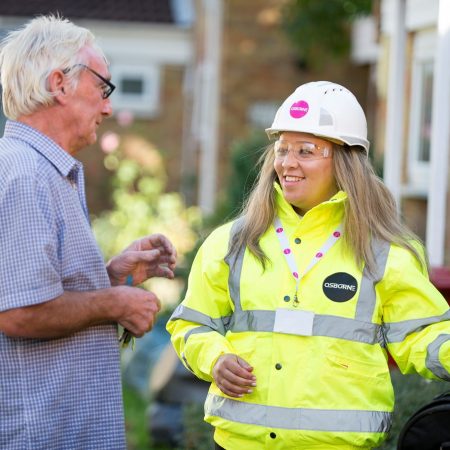Retrofit From a Residents’ Perspective
If you’re a social housing provider or a specialist contractor, everything in the world of zero carbon retrofits probably seems challenging but manageable. Approaches like Osborne’s Four Step Retrofit process bring the potentially complex programme under control – even if your property portfolio includes thousands of properties of different ages and types.
For social housing residents the future is probably less clear. The level of interest in climate change and awareness of the practicalities of net zero carbon varies widely. This situation has to be addressed for retrofit programmes to proceed smoothly.
The BEIS Public Attitudes Survey from March 2021 indicates that there’s still a significant net zero education programme to be done among the general population.
Only 3% of people asked knew a lot about net zero and 11% claimed to know a fair amount. 25% knew a little about net zero and 23% knew hardly anything about it. Almost a third of people (32%) had not heard of the term before the interview.
That’s not the ideal backdrop for telling people that they may have to leave their home for a period of time while a deep whole home retrofit is completed.
The BEIS survey also found that 33% of people in the UK are very concerned about climate change and 47% ‘fairly concerned.’ 18% were not really concerned at all.
‘Fairly concerned’ sounds like a broad and indistinct category. Are they concerned enough to appreciate why their home, if not their life, will be turned upside down?
A Whole Home Approach
Where research has been carried out a whole home approach to retrofit is preferred by residents. That’s probably not surprising. As a resident what are you most likely to want: a series of disruptions and piecemeal improvements, or a one off project to get everything done so that you can start enjoying the benefits of a warmer home and lower energy bills?
Residents will also expect and appreciate retrofit programmes that are fully integrated with other upgrades such as replacement kitchens and bathrooms. Combining workstreams will give residents a package of tangible benefits as well as improving overall efficiency.
Research reported by Inside Housing strongly suggests that social housing residents prefer the whole home approach. There could, of course, be exceptions and we have to acknowledge that data is limited. Individual social housing providers must be wary of assumptions and ensure they have a good grasp of residents’ attitudes and priorities.
Informed Consent
Acceptance and engagement will always be easier if people can influence decisions, make informed choices and co-design solutions. And to make an informed choice you need accurate information.
At the same time you have to manage expectations so that everyone understands the purpose of any consultation. Realistically, programmes can’t be managed around the individual preference of every single resident.
Retrofit will generate many questions and probably even more false assumptions and urban myths. Residents must know where to go to get accurate information and all customer-facing staff have to be ready to give accurate and credible answers.
The Covid pandemic showed how the influence many people wield – particularly on social media forums – isn’t always directly related to their knowledge or qualifications.
What Will Residents Be Concerned About?
Depending on their history with your repair and maintenance service, some residents might have worries about the standard of work that will be carried out and the potential for unplanned consequences.
There’s no easy way around this other than to be clear and detailed in explaining what work will be done, why it is needed and what the benefits will be. Sharing case studies and resident feedback from successful retrofits will be essential.
This could bring its own problems. Once residents are sold on the benefits they could become impatient. The priorities and reasoning behind the scheduling must be completely transparent.
As with everything else, clear and consistent messages and regularly updated information are critical success factors. It’s vital to work with existing structures such as tenant and leaseholder committees and provide as much face-to-face and visual information as possible.
Behavioural change is a key part of carbon reduction. Residents will need guidance on how to heat and ventilate a low carbon home to achieve a balance between comfort and low energy bills.
Practice What You Preach
Is zero carbon retrofit something that will be done to social housing residents or part of a planet-saving programme that we’re all part of?
Keeping residents on board will be easier where there’s a visible commitment to use an electric vehicle fleet, decarbonise council or housing association offices and improve the overall environment by developing green spaces. ‘We’re all in this together’ can’t just be a slogan.
There are significant and tangible benefits to social housing residents as a result of zero carbon retrofits. But if we start from the assumption that these are self-evident or that everyone is already 100% onboard with climate action we’re likely to face an uphill struggle for engagement and commitment.
For more information on Osborne’s holistic approach to net zero carbon retrofit visit our resource centre. Or contact Nick Davidge ([email protected]).

